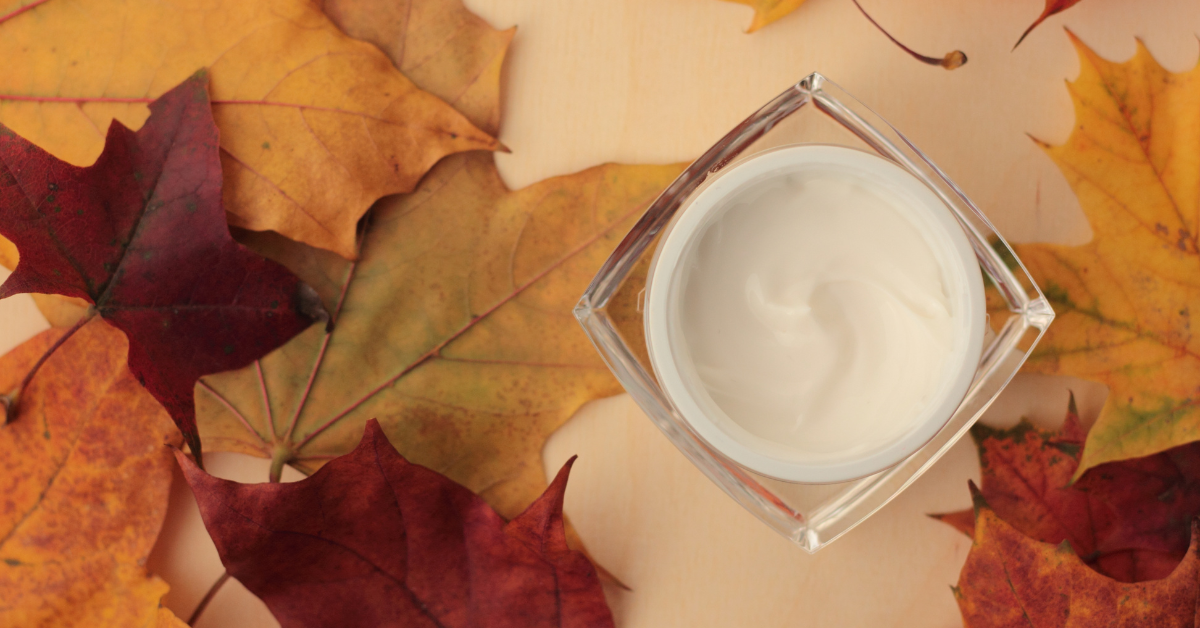
Why Repairing Skin Barrier is Important during Summer-Fall Transition
|
Time to read 5 min


|
Time to read 5 min
Our skin is not only the largest organ in our body but also serves as a protective shield against the external environment. The skin barrier, also known as the lipid barrier or moisture barrier, plays a crucial role in maintaining skin health.
It is located in the outermost layer of the skin (stratum corneum) and consists of lipids (fats), ceramides, cholesterol, and fatty acids that form a protective shield.
It has several functions:
Hydration Regulation: The skin barrier prevents excessive water loss, helping to maintain skin hydration and preventing dryness.
Protection: It acts as a defense against external aggressors like pollutants, UV radiation, and pathogens, shielding the underlying layers of skin.
pH Balance: The barrier helps maintain the skin's natural pH level, which is essential for healthy functioning.
When your skin barrier is compromised and damaged, it can lead to a range of uncomfortable and visible skin issues.
Needless to say, our skin barrier is crucial for the health of our skin.
Then what are some factors that contribute to compromised skin barrier?
The sad truth. Yes, as we age, the skin barrier undergoes changes that can lead to its compromise. These changes contribute to various skin issues commonly associated with aging:
The shift in weather from warm and humid to cooler and drier conditions during this summer to fall transition can challenge your skin's protective barrier.
Effects of Weather Transition on the Skin Barrier
Decreased Humidity: One of the most noticeable changes during the fall is the drop in humidity levels. Dry air can cause water to evaporate more quickly from your skin, leading to dehydration and potentially compromising the skin barrier.
Cooler Temperatures: As the weather cools down, your skin may be exposed to cold winds and lower temperatures. Cold air can cause constriction of blood vessels, reducing blood flow to the skin and impacting its ability to repair and regenerate.
Indoor Heating: To stay warm indoors, you might rely on heating systems, which can further decrease indoor humidity levels. Dry indoor air can contribute to skin dryness and barrier disruption.
Hot Showers: With the cooler weather, you might be tempted to take longer, hotter showers. However, hot water can strip your skin of natural oils, leaving it dry and potentially compromising the barrier.
Wind Exposure: Fall often brings gusty winds that can strip away the skin's natural oils and disrupt the protective barrier.
In addition to the factors mentioned above, genetic factors, lifestyle choices, and skincare habits can significantly influence how quickly or slowly the skin barrier's compromise occurs. So some individuals may experience these changes earlier, while others may maintain a healthier barrier for a longer time.
So how do we protect our skin from becoming compromised, especially during this summer-to-fall transition period, which could take a toll even on the healthiest skin barrier?
Thankfully, there are some things you can do to protect and EVEN REPAIR damaged skin barrier.
Hydration: This may sound like common advise, but it is the MOST IMPORTANT one. Take it from someone who's suffered damaged skin barrier - itchiness, redness, cannot put anything on my skin. What saved my skin? HYDRDATION!
Proper hydration is essential for a healthy skin barrier. Use hydrating products containing ingredients like hyaluronic acid, glycerin, and other humectants to replenish water and improve barrier function. (Read more about what other ingredients are considered humectants.)
Some people resort to “oils” only when their skin is dehydrated. But I would recommend applying a hydrating product before applying oil because if your skin is "DEHYDRATED", your skin requires WATER FIRST.
When your skin is hydrated, you can apply facial oils to lock in the moisture.
Barrier-Repairing Ingredients: Look for products containing the following barrier-supporting ingredients:
Try our All-in-One Essence for Dry Skin and our Repair Night Cream if you have extremely dehydrated and dry skin. These two products combined together have enough fatty acids, humectants, and anti-inflammatory and healing ingredients to help hydrate, lock in moisture and repair damaged skin barrier.
If you have normal skin, you can try our All-in-One Essence Oil-Free along with Repair Night Cream. Our Oil-Free Essence supplies long-lasting hydration that combination skin requires, which can be locked in with our Repair Night Cream.
Patch Testing: When introducing new products, perform patch tests to ensure they don't trigger adverse reactions that could damage the already-fragile barrier. But patch testing is important not only during summer-fall transition, but throughout the year when introducing new products, especially if you have sensitive skin.
Elżbieta, Szymanska. (2012). Allantoin - Healing and anti-inflammatory properties. Pediatria i Medycyna Rodzinna. 8. 73-77. (LINK)
Engebretsen, K. A., Johansen, J. D., Kezic, S., Linneberg, A., & Thyssen, J. P. (2015). The effect of environmental humidity and temperature on skin barrier function and dermatitis. Journal of the European Academy of Dermatology and Venereology, 30(2), 223–249. https://doi.org/10.1111/jdv.13301
Lin, T.-K.; Zhong, L.; Santiago, J.L. Anti-Inflammatory and Skin Barrier Repair Effects of Topical Application of Some Plant Oils. Int. J. Mol. Sci. 2018, 19, 70. https://doi.org/10.3390/ijms19010070 (LINK)